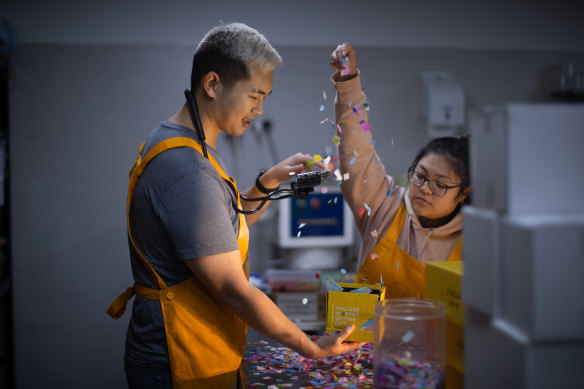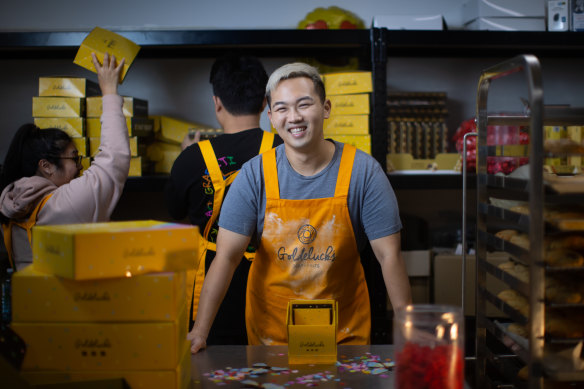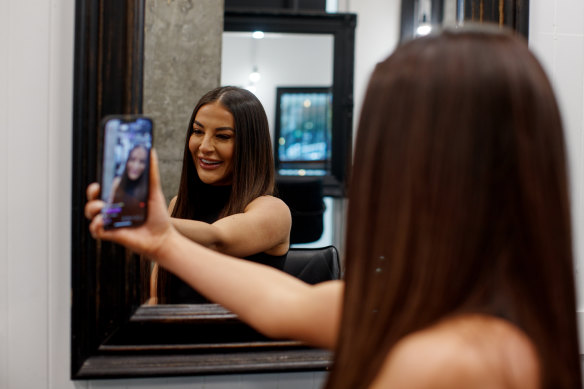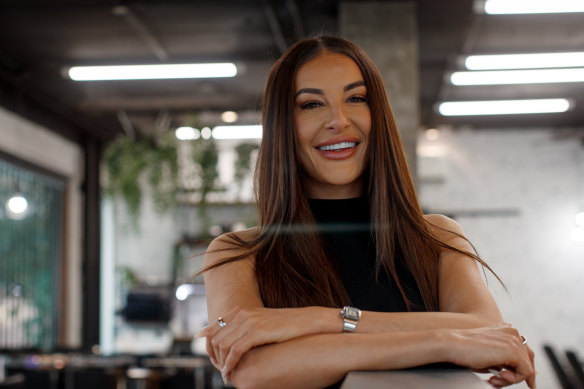Viral TikTok videos an antidote to rising consumer crunch
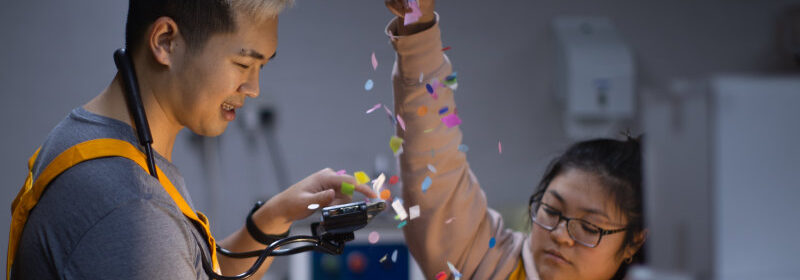
By Millie Muroi
Save articles for later
Add articles to your saved list and come back to them any time.
On the first Tuesday of nearly every month in the past year, self-made dessert shop owner Phillip Kuoch has noticed an immediate drop-off in customer numbers.
“Whenever the Reserve Bank increases interest rates, we see a dramatic drop,” Kuoch said. “The last one was very obvious.”
While his business Goldelucks is not immune to rising rates and cost of living pressures, Kuoch’s following of more than 700,000 people on TikTok has made it easier for the business to continue growing.
Goldelucks owner Phillip Kuoch said his videos started going viral when he stopped paying an agency to make them.Credit: Simon Schluter
Kuoch is no stranger to tough circumstances, having taken a year off his marketing degree in 2015 to support his parents and build his own business.
“My parents were refugees from Cambodia and always wanted to start a business,” Kuoch said. “They found one in Croydon eight years ago and were about to sign the papers when dad’s medical condition got really bad, so they couldn’t do it. It was hard seeing my parents go through that, so I took a year off uni to start my own business.”
In 2021, Kuoch joined TikTok, paying an agency to create videos for his business account. But it was only when he started making his own content that Goldelucks went viral.
“For the first three months, we outsourced to an agency that was charging $500 for two videos which would only get a couple of hundred views each,” he said. “Then one random afternoon, I made a video in 10 minutes, and 24 hours later, it had half a million views.”
While lockdowns in Melbourne forced Kuoch to turn his local bakery to a hamper and gifts business, he said TikTok transformed Goldelucks into a national business.
“Going on TikTok put us on the map,” Kuoch said. “At one point during lockdowns we were making a delivery every 51 seconds across Australia.”
Compared with other platforms like Instagram and Facebook, Kuoch said TikTok fostered less polished, more vulnerable content.
“Until recently, businesses have been cautious about pulling back the curtains and being intimate with their audience,” Kuoch said. “We were one of the first to post behind-the-scenes content of what goes on in our kitchen, and vlog updates changed the game for us. Now, so many people come into the store knowing my whole life story and connecting with it.”
Phillip Kuoch said at one point during lockdowns, his business made a delivery every 51 seconds.Credit: Simon Schluter
As inflation continues to bite, Kuoch said TikTok was an invaluable marketing platform, with his packing videos in particular attracting viewers.
“Marketing costs, or the costs of acquiring customers, have increased about tenfold,” Kuoch said. “Videos where we pack customer orders work really well because people like perving into what other people order.”
Kuoch said building a TikTok presence helped him expand Goldelucks including buying a warehouse for the business, and that a ban on the platform would have a substantial negative impact. “TikTok has changed the game for our business, so having it banned would be a big blow to us,” he said.
Goldelucks is one of more than 350,000 businesses on the platform, and Kuoch is one of 8.5 million Australia users, according to Brett Armstrong, general manager of global business solutions for TikTok ANZ.
“Everyone has their own story and on TikTok, you’re not connecting with your friends necessarily,” Armstrong said. “You’re connecting with a community with similar interests, so people are super engaged. If you look at the content on TikTok, it’s not Hollywood studio productions, it’s mostly just authentic and real.”
While other social media platforms largely rely on users “following” friends, family or creators they are interested in, TikTok is known for its “for you page” which presents a stream of videos that its algorithm determines a user may be interested in.
TikTok was banned from Australian federal government devices in April, with the opposition pushing for a further review which would open up the possibility of a nationwide ban of the app. In May, Montana became the first US state to ban TikTok from mobile application stores in 2024.
Armstrong said TikTok played an important part in the Australian economy and denied the platform was a national security risk.
Bondi Junction-based hairstylist Sarah Emilia’s career began in her garage more than a decade ago, but her business took off when she clocked nearly a million followers within months.
“I actually hated school,” she said. “But my mum saw me always cutting my friends’ hair and playing around in the garage, and she said ‘you should try it’.”
Emilia created her TikTok account about five years ago during what she called “the era of TikTok dances”, but her following skyrocketed in the first half of this year.
Sarah Emilia started racking up followers after posting videos in her Bondi Junction hair salon Credit: Nikki Short
“I grew it to about 7000 followers and then for years, I left it alone,” she said. “Then one day at the end of last year, I jumped back onto it and started posting content. From then, I’ve been posting every day and managed to grow that account to 830,000 followers in the first five months.”
As of June, Emilia’s TikTok account had 910,000 followers.
The social media platform is known for its “viral trends”, which users can replicate and share through their own videos. One trend Emilia said she started involves hairstylists filming consultations with their clients.
“It’s now a global trend, but because I was the first to do it, it allowed me to blow up as fast as I did,” Emilia said. “That’s what really kick-started my TikTok account and that type of content still works to this day.”
Compared to other social media platforms, Emilia said TikTok had a more personal feel, with creators allowing their audience to see more “real-life, day-to-day stuff”.
“Most comments I get are about the strong communication I have with my clients, so instead of posting highly edited content with music in the background like on Instagram, I took the complete opposite approach with my TikTok videos,” she said.
Sarah Emilia said her following grew rapidly in the past five months.Credit: Nikki Short
Growing a following has also been a slower process on Instagram compared to TikTok, Emilia said.
“I’ve been on Instagram for the last 12 years, and it’s quite hard to grow on,” she said. “I’m growing about 10,000 followers a month on Instagram versus 100,000 followers a week on TikTok.”
Despite cost-of-living pressures putting a dampener on consumer spending, Emilia said TikTok had helped book out her services until November, and that about 90 per cent of her newer customers were from the app.
Similarly, 23-year-old Chebbo, who eschewed a career in finance and accounting to run a burger business and create TikTok content, said about 90 per cent of his new customers came from the platform.
“I started posting regularly in March 2020, and it was nothing special, but the dedication and effort resonated,” Chebbo said. “It was like having two full-time jobs, a social media one and a burger business, but I posted for 75 days and the third or fourth video, which was a McDonald’s cheeseburger remake, got 400,000 views. I couldn’t believe my eyes.”
As of June, Chebbo had 1.1 million followers on TikTok, and has managed to grow his joint from a three-person operation to a business with 19 casual staff.
He said TikTok was a more democratic platform than other social media sites.
“I didn’t need a marketing agency and there were no barriers to entry,” he said. “It was just me with my smartphone. It feels like you can be more transparent on TikTok, compared with the longer-form, clickbait content on YouTube or the showy stuff on Instagram.”
University of Sydney professor of business information systems Uri Gal said TikTok was catering to an ongoing trend towards short-form videos.
“There’s been a shortening of user attention-spans so short-form videos, like those on TikTok, are useful for grabbing attention, especially of young people,” he said.
Although Australian advertising spend has been larger on Instagram and Facebook (between $4.7 billion to $5.1 billion combined) than TikTok (between $100 million and $150 million), according to the Australian Competition and Consumer Commission, that could be a result of users getting substantial reach and going “viral” organically on TikTok, without needing to spend money to reach their target audiences.
While Gal said he didn’t see TikTok dying off any time soon on its own, he said there was a risk that it could be banned.
“There have been increasingly serious conversations about TikTok risks associated with having so many people put out so much personal information on a platform owned by a Chinese company, with ties to the Chinese government,” he said. “As long as businesses don’t provide sensitive information about operations, trade secrets or patents, the only risk is if they spend lots of money on TikTok campaigns and then someone makes the decision tomorrow to shut it down.”
The Business Briefing newsletter delivers major stories, exclusive coverage and expert opinion. Sign up to get it every weekday morning.
Most Viewed in Business
Source: Read Full Article

